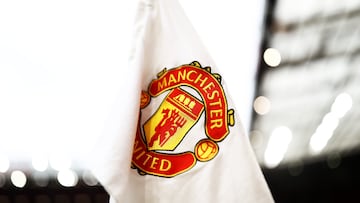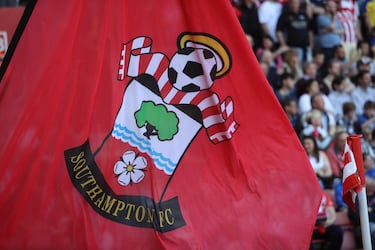What are the nicknames of the Premier League teams?
Some club nicknames in the Premier League, such as ‘the Blues’, ‘the Reds’ and ‘the Whites’, are fairly self-explanatory. Others require more unpacking.


Arsenal - the Gunners
Also adapted to ‘the Gooners’, the moniker relates directly to Arsenal’s name, and the origins that shaped the 13-time English champions’ identity: founded in 1886, the team was formed by workers from the Woolwich Arsenal Armament Factory. The North London club’s beginnings in the munitions industry are also referenced on its crest, which features a cannon.
Aston Villa - the Villans
The nickname derives from the second half of Aston Villa’s name, which was chosen because the 1981 European Cup winners were founded by members of the Villa Cross Wesleyan Chapel in Birmingham, the Midlands city where the 148-year-old club is based. (As for Aston, it’s an area in Birmingham.)
Bournemouth - the Cherries
There are a couple of possible reasons why Bournemouth are known as ‘the Cherries’. One explanation points to the red stripes on the team’s home shirt, while it has also been suggested that the nickname refers to cherry orchards that were housed on the land where the club’s home stadium was built.
Brentford - the Bees
No, Brentford were not founded by local beekeepers. Slightly disappointingly, the nickname ‘the Bees’ is simply the result of a misunderstanding. In the 1890s, soon after the South London club came into being, supporters’ chants of “buck up, Bs” were misinterpreted by the press as being “buck up, Bees”, and the name stuck.

Brighton & Hove Albion - the Seagulls
Also referred to as ‘the Albion’ for obvious reasons, Brighton were nicknamed ‘the Dolphins’ before their rivalry with Crystal Palace, who are known as ‘the Eagles’, prompted a change. In a mid-70s clash between the sides, Palace fans’ chants of “Eagles, Eagles”, led Brighton supporters to respond with shouts of “Seagulls, Seagulls” - a bird their seaside town sees rather a lot of.
Chelsea - the Blues
Chelsea have played mostly - and at times entirely - in blue since they were founded in 1905, so little explanation is required as to what exactly their nickname is getting at. The West Londoners were previously referred to as ‘the Pensioners’, in a nod to the distinctively-clad military veterans housed at the Royal Hospital Chelsea. However, manager Ted Drake sought to do away with the name in the 1950s, replacing it with ‘the Blues’.
Crystal Palace - the Eagles
Palace were ‘the Glaziers’ until larger-than-life manager Malcom Allison turned up in 1973. Allison sought to revolutionise Palace’s identity by taking inspiration from Portuguese club Benfica, whose nickname ‘As Aguias’ translates as ‘the Eagles’. Allison couldn’t get his team playing like the Lisbon giants, however. In his first full season in charge - with the team also playing in new colours at his behest - Palace were relegated for the second straight year.
Everton - the Toffees
Everton’s nickname ‘the Toffees’ dates back to the late 19th century, when the club’s move to its current home, Goodison Park, left two sweet shops vying for supporters’ business. To head off its competitor, Ye Ancient Everton Toffee House - which had also catered to fans at the club’s previous grounds - introduced the Everton Toffee Lady, who was sent to Goodison to hand out toffees to fans. It’s a tradition that continues to this day. Owing to the colour of Everton’s home shirt, they are also referred to as ‘the Blues’.
🍬 | Today's Toffee Lady? Alan Ball's granddaughter.
— Everton (@Everton) October 1, 2017
The great man's family are here as we celebrate his life & legacy. #NothingWillBeTheSame pic.twitter.com/U6Kr96Aofp
Fulham - the Cottagers
Also nicknamed ‘the Whites’ and the ‘Lilywhites’ because of the chief colour of their kit, Fulham are principally known as ‘the Cottagers’ thanks to the name of their home stadium, Craven Cottage. Constructed in 1896, the stadium includes an actual cottage in one of the corners, built because the ground’s architect, Archibald Leitch, had neglected to include dressing rooms in the main stand.
Leeds United - the Whites
Another of Leeds’ nicknames is ‘the Peacocks’, which derives from the original name of the club’s Elland Road Stadium: the Old Peacock Ground. However, ‘the Whites’ is what you’ll most often hear - and Leeds have legendary manager Don Revie to thank for that. Impressed by Real Madrid’s all-white kit, Revie changed Leeds’ colours to emulate the Spanish giants at the beginning of the 60s, before winning two league titles, an FA Cup and two Fairs Cups in a 13-year tenure that was the club’s most successful era to date.

Leicester City - the Foxes
A fox features front and centre on the club badge, and it’s not only Leicester’s soccer team that are referred to as ‘the Foxes’. Leicestershire County Cricket Club also bear the nickname. The choice comes down to the surrounding area’s long-held associations with the animal: Leicestershire is considered the home of fox hunting, having hosted the oldest known hunt in the 17th century.
Liverpool - the Reds
As with Chelsea and Leeds, the origin of Liverpool’s nickname is a simple one. The 19-time English champions have played in a red shirt for all but two of their 130 years of existence (they originally sported blue and white halves), and have worn all red since the 1960s. The great Liverpool manager Bill Shankly was responsible for this final change, later saying: “The introduction of the all-red strip had a huge psychological effect […]. Christ, the players looked like giants. And we played like giants.”
Manchester City - the (Sky) Blues, the Citizens
Of the 20 teams in this season’s Premier League, City’s is the hardest nickname to pin down; they don’t really seem to have a main one. Because of the colour of their home shirt, which hasn’t changed since 1894, the defending champions often refer to themselves as ‘the Sky Blues’ or ‘the Blues’. Meanwhile, ‘the Citizens’ - a name that has evolved from ‘City’ and has been ranked as the worst in the division - has appeared to grow in use in recent years.
Manchester United - the Red Devils
United owe their ‘Red Devils’ moniker to Sir Matt Busby, the legendary manager who steered the club to five league titles, two FA Cups and a European Cup in the 1950s and 60s. Busby, in turn, owes the nickname to the Salford rugby club, whose red shirts had led French journalists to refer to them as ‘Les Diables Rouges’ during a 1930s tour of the country. A devil now features on United’s crest and is the inspiration for the club’s mascot, Fred the Red.
Newcastle United - the Magpies
Albeit not as direct as other Premier League clubs’ nicknames, ‘the Magpies’ is also a reference to the team’s kit. Since 1894, having changed from red two years after the club was founded, Newcastle United have worn a now-iconic black and white-striped home shirt - colours they share with the magpie.
Nottingham Forest - the Reds
Although Nottingham Forest’s chief nickname, ‘the Reds’, is not ostensibly all that interesting - it’s used because the team’s home shirt is red - the club’s choice of the colour does explain why they are also known, rather more curiously, as ‘the Garibaldis’. Following Forest’s creation in 1865, the club’s members were inspired to wear red by the 19th-century Italian freedom fighter Giuseppe Garibaldi and his volunteer army of Redshirts.
Southampton - the Saints
The nickname ‘the Saints’ is a reference to the fact that Southampton were founded as a church soccer team by members of the south-coast city’s St Mary’s Church of England Young Men’s Association. In a nod to their identity as ‘the Saints’, the club’s crest features a halo.

Tottenham Hotspur - Spurs, the Lilywhites
Tottenham are often called by their shortened name ‘Spurs’, which has developed out of Hotspur. Where did Hotspur come from? It’s the name of the cricket team whose members founded the club. That team was named after Sir Henry Percy, a 14th-century English knight known as Sir Harry Hotspur for his valor in battle. He features in Shakespeare’s Henry IV, Part I.
As for ‘the Lilywhites’, it’s not often you’ll hear Tottenham be referred to by that nickname - one which was chosen because the club’s home shirt is white. Founded in 1882, Spurs wore a range of colours in their early years, even sporting a jazzy orange and brown number, before settling on white in 1898.
West Ham - the Hammers
Related stories
Both ‘the Hammers’ and West Ham’s other most notable nickname, ‘the Irons’, relate to the East London club’s origins as a soccer team for workers at the Thames Ironworks and Shipbuilding Company. In a clear reference to the club’s industrial beginnings, indeed, West Ham’s crest depicts two hammers.
Wolverhampton Wanderers - Wolves
Wolves are more commonly known by their nickname, which - like Spurs from Tottenham Hotspur - has evolved from the club’s full name. Indeed, it’s rare these days for the club to be referred to as Wolverhampton Wanderers. A depiction of a wolf first appeared on the Wolves shirt in the 1960s, before the club’s badge developed into the wolf’s-head look of the present day.

